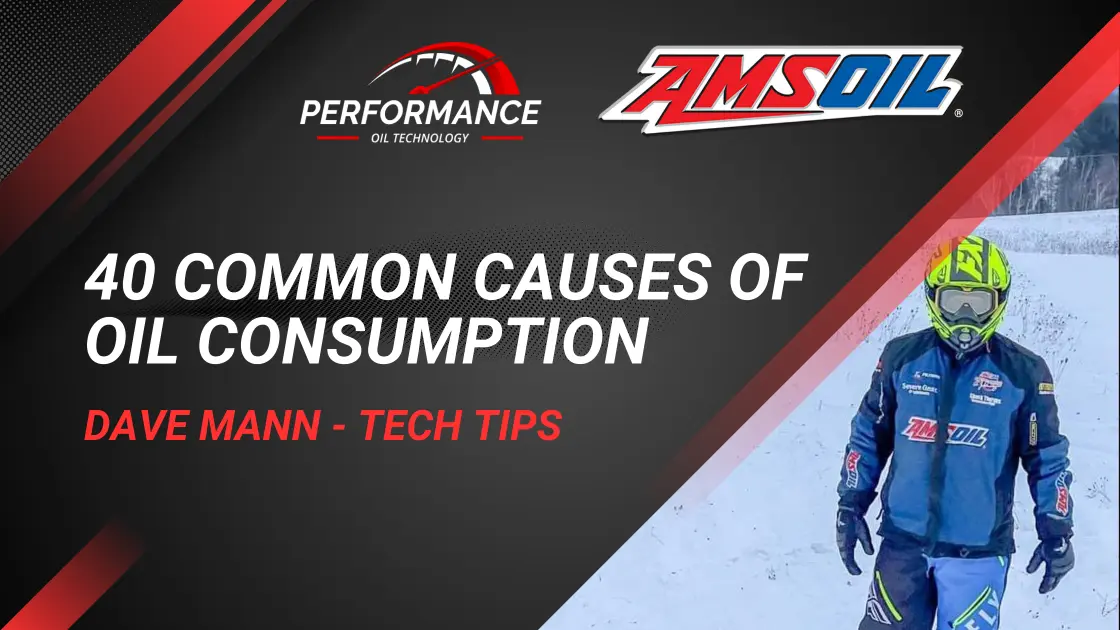Royal Purple vs AMSOIL: Oil Matchup

Top Insights
Deciding between popular synthetic motor oil brands like Royal Purple and AMSOIL? We've analyzed oils from both companies below so you can make the most informed purchasing decision possible.
Brief Overview of AMSOIL & Royal Purple
Before getting into the stats and numbers of both brands' oil products, it's good to get a general overview of both AMSOIL and Royal Purple.
Royal Purple is a US-based lubricant manufacturer headquartered in Porter, Texas. The company was founded in 1986 by John Williams and was somewhat recently (2012) acquired by Calumet Specialty Products Partners (CLMT).
AMSOIL was founded by Al Amatuzio in 1969 (as "Life-Lube, Inc." which later became AMSOIL) and is headquartered in Superior, Wisconsin. AMSOIL has been researching and developing synthetic lubricants for much longer than Royal Purple, but both companies have a lot of similarities.
Royal Purple & AMSOIL Similarities
Both companies offer a wide variety of synthetic lubrication products covering very similar applications. From gas and diesel engine oils and filters, to fuel additives and firearm lubricants.
Both brands also have many strategic partners and sponsorships throughout the performance automotive industry.
Royal Purple sponsorships and partnerships have included Formula DRIFT (notably representing Dylan Hughes), as well as Red Bull Global Rallycross, Horsepower Wars, NASCAR, the Indy 500, and many more.
AMSOIL's sponsorships and partners include the USAC National Sprint Car Series, Sturgis Motorcycle Rally, Championship Off-Road, off-road driver Bryce Menzies, Snocross, Banks Power, among many others.
Another interesting similarity to note is that both brands have been partnered with Lingenfelter Performance Engineering - a company that specializes in high-end performance modifications in engines and induction systems found in mostly GM vehicles (Camaros, Corvettes, Cadillacs, etc.).
In 2014 it was announced that Royal Purple products would be the standard fill oil used in all Lingenfelter-tuned vehicles, which, at the time, included the Chevy Reaper, C7 Corvette, Camaro and Cadillac CTS-V. However, just this year (March, 2024) it was announced that AMSOIL is now the official lubricants provider of Lingenfelter. This new partnerships means AMSOIL now provides lubricant products for all Lingenfelter builds and the Lingenfelter racing team.
AMSOIL vs Royal Purple Matchup
For this oil matchup, we'll be specifically comparing AMSOIL Signature Series 5W-30 with Royal Purple HPS (High Performance Street) 5W-30. Both companies offer a range of product lines, but the Signature Series and HPS are both marketed to motorists who want the most protection, but aren't their top-of-the-line oil products designed for the most extreme applications (racing/powersports).
One immediate difference to note is that Royal Purple High Performance Street oils are not licensed and may not be strictly OEM warranty compliant. Whereas AMSOIL's Signature Series oils are Warranty Secure and keep your factory warranty intact.
AMSOIL Signature Series vs. Royal Purple High Performance Street
While both manufacturers do list some oil ratings & specifications for the selected oils, they don't always match up perfectly, so we'll compare them as closely as possible.
Manufacturer Specified Ratings
*hover over each specification for more details.
AMSOIL's Signature Series 5W-30 has bested Royal Purple's HPS 5W-30 with better ratings in Pour Point, Total Base Number, Cold Crank Viscosity (CCS) and their service life guarantee. It's good to note that not all of those ratings equally factor into the quality of any given motor oil. If you want to learn more about how motor oil's are tested read on here. In my experience, the three most important ratings of the ones that we compared above are viscosity index, pour point, and Cold Cranking Viscosity (CCS). These three ratings somewhat effectively sum up an oil's volatility and protection potential over varying temperatures. AMSOIL is currently on top with better ratings for 2 of these 3 so far.
Other important factors to compare are the oil additives by PPM (Parts Per Million). Many types of additives are added to motor oils for various reasons. Some act as detergents, dispersants, anti-wear agents, rust & corrosion inhibitors, and anti-foaming agents to name a few. Neither manufacturer provides exhaustive lists of the total additives added to their oils. But we will provide comparison performance tests below which give us a general idea of how well the oil's perform overall.
Independent Testing: Royal Purple vs AMSOIL
ASTM D6335 Testing
A third-party lab performed the ASTM D6335 Thermo-oxidation Engine Oil Simulation Test (TE0ST) 33C which simulates deposit foundation found in a turbocharger and is required for the API SN Resource Conserving specification. AMSOIL Signature Series performed 3.6X better than Royal Purple and 4X better than Mobil 1 Extended Performance.
ASTM D5293 Testing
Another important ASTM test is D52893 which measures cold cranking viscosity. Essentially this test determines how easily an oil will flow at engine startup (cold crank meaning the engine is not warm and has not been recently running). AMSOIL Signature Series was tested against multiple Royal Purple products (High Performance and High Performance Street) and came out on top, providing the best wear protection for engine components at startup. Lower ratings indicate less viscosity (thickness) and better flowability during cold weather startup.

What's interesting to note from this test is the difference in Cold Crank Viscosity compared to what both manufacturer's have provided for the given oils. In this test, AMSOIL's Signature Series 5W-30 performed slightly better than what is reported on their technical data sheets (3800 vs 3968) while Royal Purple's HPS 5W-30 severely underperformed (6100 vs 5480) yet Royal Purple's High Performance 5W-30 did much better than reported (4500 vs 5719).
According to this test alone, AMSOIL experienced a 4.4% difference from their manufacturer-specified technical data, while Royal Purple showed an average disparity of 18.6% from their technical data.
Project Farm Testing Royal Purple and AMSOIL
The Project Farm YouTube channel ran a series of tests stacking up AMSOIL Signature Series 5W-30 and Royal Purple High Performance 5W-30. He simulated multiple tests in his garage testing for viscosity at varying temperatures, film strength, and evaporation.
On his lubricity tester, he found that AMSOIL edged out Royal Purple by producing a wear scar approximately 13% smaller. Next, he tested how easily the oils flowed after being chilled at -15°F for 24 hours. Again, AMSOIL bested Royal Purple, flowing much easier than Royal Purple and crossing the finish line with a 3 inch lead. For the evaporative test (trying to replicate the NOACK volatility test), he found that AMSOIL evaporated at a much lower rate than Royal Purple. Finally, he added the cooked oil from the evaporative test along with new oil to test tubes, allowing them to chill in a freezer for over a day, and then tested how easily they flow (similar to his first test). The used AMSOIL's flow rate was nearly identical to the new oil, and both out-paced Royal Purple (even the used AMSOIL out-flowed new Royal Purple). Click here to watch the full video.
AMSOIL or Royal Purple?
When comparing prices, AMSOIL is typically more expensive Royal Purple. If you're strictly shopping by price, Royal Purple is likely the better choice. If you're an AMSOIL Preferred Customer, you can save up to 25% on all products and receive many other benefits. With Preferred Customer pricing, AMSOIL 5W-30 is just slightly more expensive than the Royal Purple oils tested above. Plus, the money that you can save with extended drain intervals and better protection makes AMSOIL the more cost-effective choice in the long run.
Is Royal Purple just as good as AMSOIL?
According to many third-party tests, Royal Purple doesn't measure up to AMSOIL. Will Royal Purple get the job done for cheaper? Perhaps. But independent testing proves AMSOIL is far better at lubricating and protecting your engine.
Can I mix AMSOIL with Royal Purple?
You can mix AMSOIL with Royal Purple, but it is definitely not recommended. By mixing oils, you degrade the performance of each oil and you can introduce new problems since oil additives from different oils don't always react well together.
Sources
Get FREE Shipping!
Save up to 25% on all AMSOIL products and get FREE shipping on orders of at least $100. Learn more below.
Related Articles
SAVE 25% + FREE Shipping!
Sign up today for 25% off all AMSOIL products and get FREE shipping on orders of $100 or more as a preferred customer.




